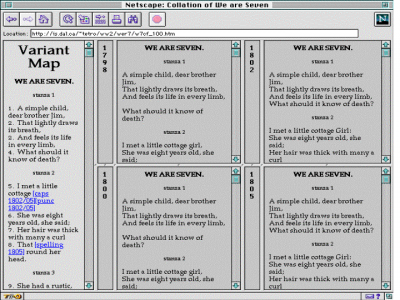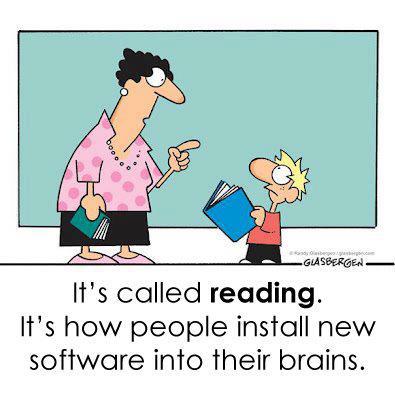Following the various articles about digital dualism that have been posted on Cyborgology (and elsewhere) over the past couple of years, it seems to me that more needs to be done to explain the consequences of digital dualism. Examples of digital dualism drawn from mainstream media opinion pieces partly reinforce this problem, with digital dualism seen merely as a rhetorical trope of editorial writing, with no real consequences aside from being theoretically misleading. The danger here is that digital dualism is seen as belonging to popular writing about new technologies. There are far fewer examples of policies based upon dualist thinking, even though this is where digital dualism has potentially dangerous consequences.
In June, the UK Department for Education (DfE) issued the proposed content specifications for the GCSE qualifications in English Literature and Language (For non-UK readers, GCSEs are taken by students aged 14 to 16).* The specifications for these GCSEs are spread over two documents that can be downloaded from the DfE’s website. Of course, these documents have to be seen in the context of wider debates around education in the UK (e.g. the introduction of free schools, the proposed scrapping of the GCSE qualification, moral panics around the “dumbing down” of education). However, both the English Literature and Language specification documents make a specific point about “digital texts”. In the case of the English Literature specifications (p. 4):
Study of high quality English literature should be the principal focus of study for this GCSE. Digital texts must not be included. GCSE specifications in English literature should be designed on the basis that students’ reading should include whole texts.
Clearly, digital dualist assumptions are mobilised in this document. There is the unclear contrast between “digital texts” and some other implicit category (material? physical? analogue?). It is difficult to determine what actually counts as a “digital text” (and the full document is no help here either). The boundaries between “digital texts” and “other texts” are difficult to work out. Is Ulysses a digital text in the sense of its influence upon hypertext fiction? If serialised Twitter short stories can’t be included, can Charles Dickens’ serialised novels? What about epistolary novels comprised of emails? Is a kindle version of a novel a “digital text”? Or a free ebook version of classics from Project Gutenberg (not forgetting that these are usually available in a variety of formats)? Then there is the odd implied contrast between “digital texts” and “whole texts”, as though it is easy to specify what a “whole text” is – is the poem “We are Seven” a “whole text”, or is Lyrical Ballads, the collection from which it is taken, a “whole text”?

Adding to the problematic distinction between “digital” and some other form of text, the Government’s specifications also imply that “digital texts” are less worthy of attention. “Digital texts” are contrasted with “high quality English literature”–a clear case of valorising of the “non-digital.” Can “digital texts” be “high quality literature?” The DfE doesn’t seem to think so (and we’re left to wonder what they would think of the Electronic Literature Organization).
The Department of Education’s aversion to “digital texts” is not only apparent in their guidelines for English Literature GCSEs. It extends into the English Language guidelines too. The document states (p. 4):
The assessment of GCSE English language will be designed on the basis that students should have read high-quality, challenging texts from the 19th, 20th and 21st centuries. The number and types of text are not prescribed. All texts studied must make significant demands on students. The texts may include literature, extended literary non-fiction, and other writing such as essays and journalism. Digital texts must not be included.
Again, there is an implied distinction between “digital texts” and “non-digital texts”, although, as with the Literature guidelines, it’s not clear where we might draw these boundaries. The paragraph implies that “digital texts” cannot be “high-quality” or “challenging”, that such texts might not “make significant demands on students”. This is even more problematic when we take into account what the specifications are designed to achieve. As the document suggests, students should be able to “read a wide range of texts, fluently and with good understanding”, “read critically, and use knowledge gained from wide reading to inform and improve their own writing” and “acquire and apply a wide vocabulary, alongside a knowledge and understanding of grammatical terminology, and linguistic conventions for reading, writing and spoken language”. Not only do “digital texts”–whatever they may be–challenge such “linguistic conventions,” they are also precisely the kind of texts that students are likely to encounter on an everyday basis, the sort of texts that are the product of their “own writing.”

Lesley Gourlay discussed one educational consequence of digital dualism in the IRL in the URL panel at Theorizing the Web 2013, and here we have another. If schools follow these dualist specifications, education becomes less in tune with the way students actually consume texts, and less in tune with their vernacular communication practices. The everyday literacy practices of students become distanced from and irrelevant to their education, which can only lead to less engagement.
Dualist assumptions have very real consequences — in this case, manifesting as policy decisions. I would urge those of us who are concerned about digital dualism to move beyond simply critiquing rhetoric by interrogating how dualist assumptions are embedded in policy that has real and immediate consequences.
—
* I am indebted to Julia Gillen for bringing these documents to my attention
Alexander David Pask-Hughes is a PhD student in the Department of Linguistics and English Language at Lancaster University, UK. He intermittently tweets and sporadically blogs.


Comments 7
Jill Walker Rettberg — September 1, 2013
Thanks for a very useful post - I didn't know about the no digital texts rules in the UK curricula. Here in Norway, digital texts are very much included in both language and literature, although there's still a lot of digital dualism in practice, I think, largely due to the lack of integration of the digital in teaching education and the general overload teachers experience.
Digital dualism in education sometimes goes the opposite way, like with many politicians' love of MOOCs - the digital as an easy fix.
No digital texts in English literature classes, please! Digital dualism and educational policy | jill/txt — September 1, 2013
[...] English Literature (for 14-16 year olds) explicitly excludes any kind of electronic literature, as Alexander Pask Hughes writes in a post on Cyborgology today. He quotes the proposed content descriptions – I suppose “proposed” means [...]
@adpaskhughes — September 2, 2013
There are a lot of digital resources/tools available to schools, some of which are designed specifically for English Literature education - BCU's collaborative annotation tool (eMargin), for example. The DfE's stance of "digital texts", however, suggests that they're not going to be putting the resources in place that are needed to fully integrate these tools into teaching.
Eivind — September 3, 2013
"digital text" is a hopeless category anyway. The essential quality of a book is not about the paper it's printed on, or the quality of the binding, or even the font-face selected. Whether you read Hamlet from a leather-bound tome or from a iPad-screen, you read the same text. Which one you prefer is largely down to practical concerns such as price, comfort and availability.
In Their Words » Cyborgology — September 7, 2013
[...] “If schools follow dualist specifications, education becomes less in tune with the way students actua...” [...]
Education Policy and the Consequences of Digita... — September 8, 2013
[...] There are a lot of digital resources/tools available to schools, some of which are designed specifically for English Literature education – BCU's collaborative annotation tool (eMargin), for example. The DfE's stance of “digital ... [...]
Education Policy and the Consequences of Digita... — March 24, 2014
[…] There are a lot of digital resources/tools available to schools, some of which are designed specifically for English Literature education – BCU's collaborative annotation tool (eMargin), for example. The DfE's stance of “digital ... […]